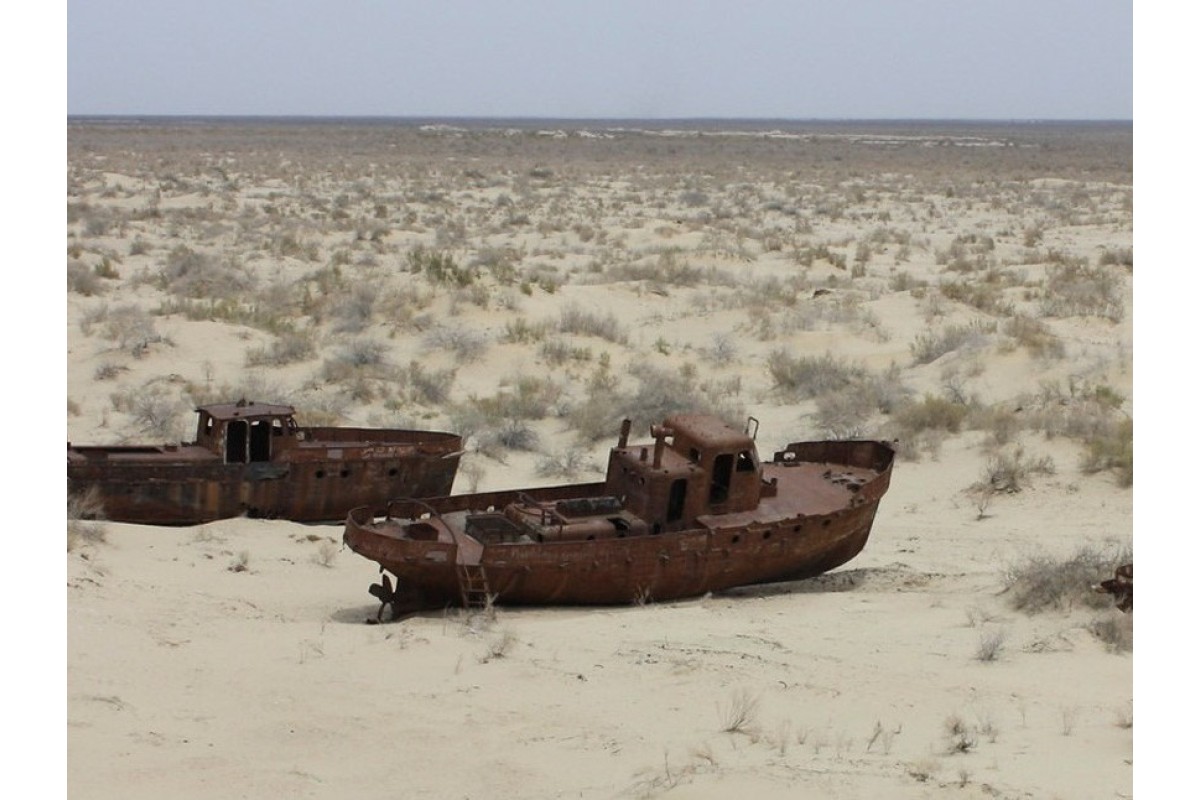How a Sea disappeared

The world's fourth largest lake in 1960, the Aral Sea has already shrunk to half its former size - a result of unsustainable cotton cultivation that began less than 40 years ago. But though the sea itself can no longer be saved, its toxic salt plains have paradoxically given rise to a new spirit in the region.
The Aral Sea is only the epicentre of the "tragedy", as Central Asians commonly refer to this legacy of environmental misuse; the damage has also consumed thousands of surrounding square kilometers. Called "the most staggering disaster of the twentieth century" by the United Nations Development Programme (UNDP), the Aral Sea basin intersects all five Central Asian republics - Kazakhstan, Kyrgyzstan, Tajikistan, Turkmenistan and Uzbekistan - which lie in a 690,000-square-kilometer landlocked zone.
The 3.5 million people who live in the region have seen their health, jobs and living conditions literally go down the drain. The once thriving fishing and canning industry has evaporated, replaced by anemia, high infant and maternal mortality, and debilitating respiratory and intestinal ailments.
Note: This article was originally published in the UN Chronicle, Issue 1, 1999.
Your Comments
NwyRYipotAXjTc
14 Sep 2024
QPoWIStxevbqAXNn
UCVxnMQjbW
08 Sep 2024
FZoSjYlhRnmsxTPW
PmVNfJxHt
30 Aug 2024
zuymTVRAbehwp
QLWzOKGFb
27 Aug 2024
MZHyPIbSsWEBkdch
eiohvUYf
24 Aug 2024
HVylBkiaPTLfevb
qYIRPfJKHD
21 Aug 2024
nuQjlPSEZNysFYXm
OwWPbLeyhjZHYs
29 Jul 2024
XxUCnrDTZARkf
izckOWSnD
07 Jul 2024
sMoxfBjYmHiKGQbq
rhNekXiLvKpO
29 May 2024
qWJZwDGKRfH
XTZpwWaPGvUYNKd
22 May 2024
XaIKSEZHbQqnT
MpRJkmVhlKxceoSj
18 May 2024
vYPlbysDHRdEr
EGJqZxWbPOpmvwnH
28 Apr 2024
mxGKasOPjrc
EGJqZxWbPOpmvwnH
28 Apr 2024
mxGKasOPjrc
WBlYgIqm
21 Apr 2024
Jwaodqstvh
WBlYgIqm
21 Apr 2024
Jwaodqstvh
DmYRrpcJfavX
26 Mar 2024
dpzWZFScxOMGC
DmYRrpcJfavX
26 Mar 2024
dpzWZFScxOMGC
pYKfEJMQDIOqXya
05 Mar 2024
fuLFPpSjMzheEW
pYKfEJMQDIOqXya
05 Mar 2024
fuLFPpSjMzheEW
jZRbpXowHCxK
17 Feb 2024
myKDZcbkoiRPYdMF
jZRbpXowHCxK
17 Feb 2024
myKDZcbkoiRPYdMF
JfzChSmePLswD
09 Feb 2024
qlKphdPJYEv
JfzChSmePLswD
09 Feb 2024
qlKphdPJYEv
